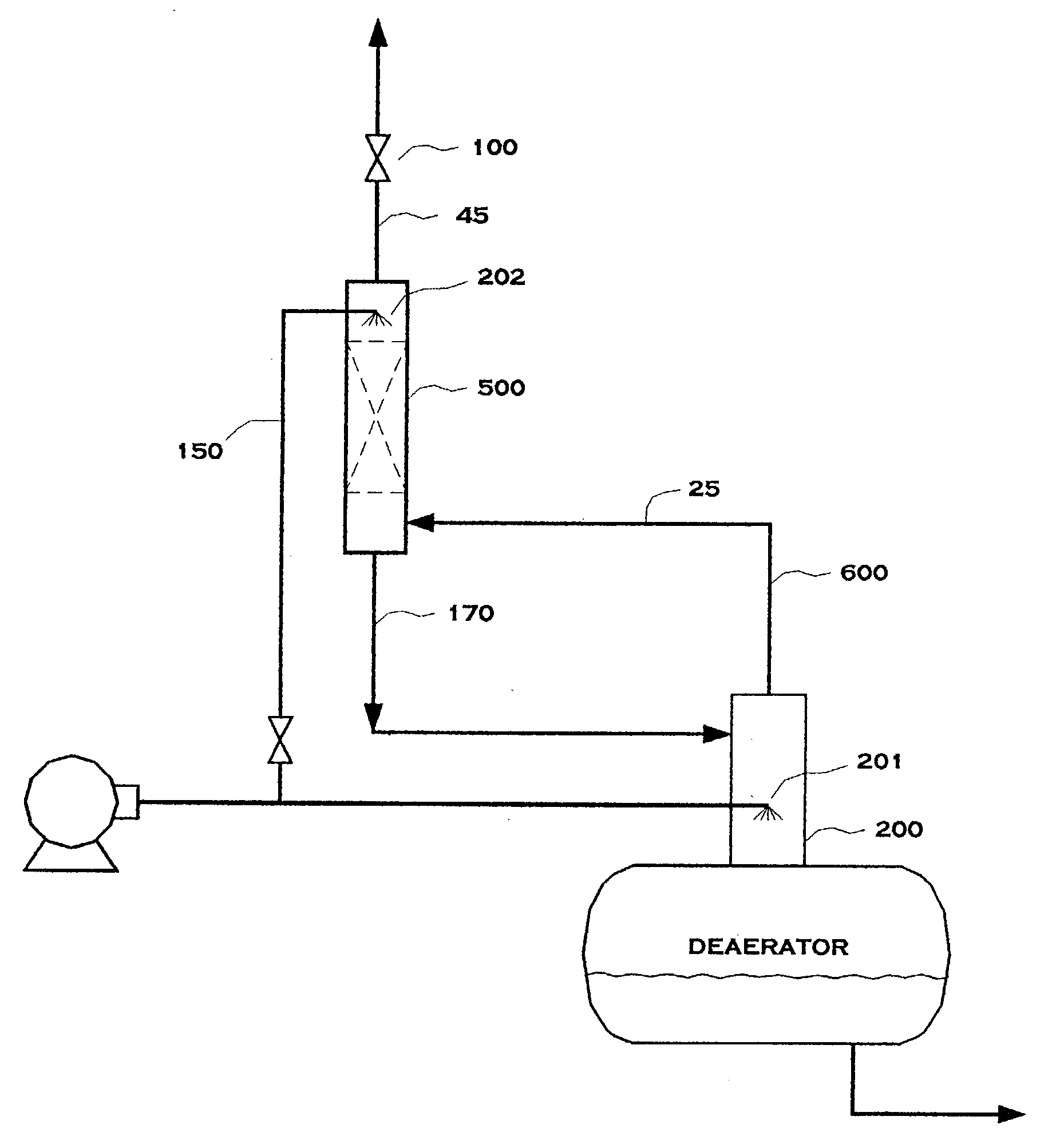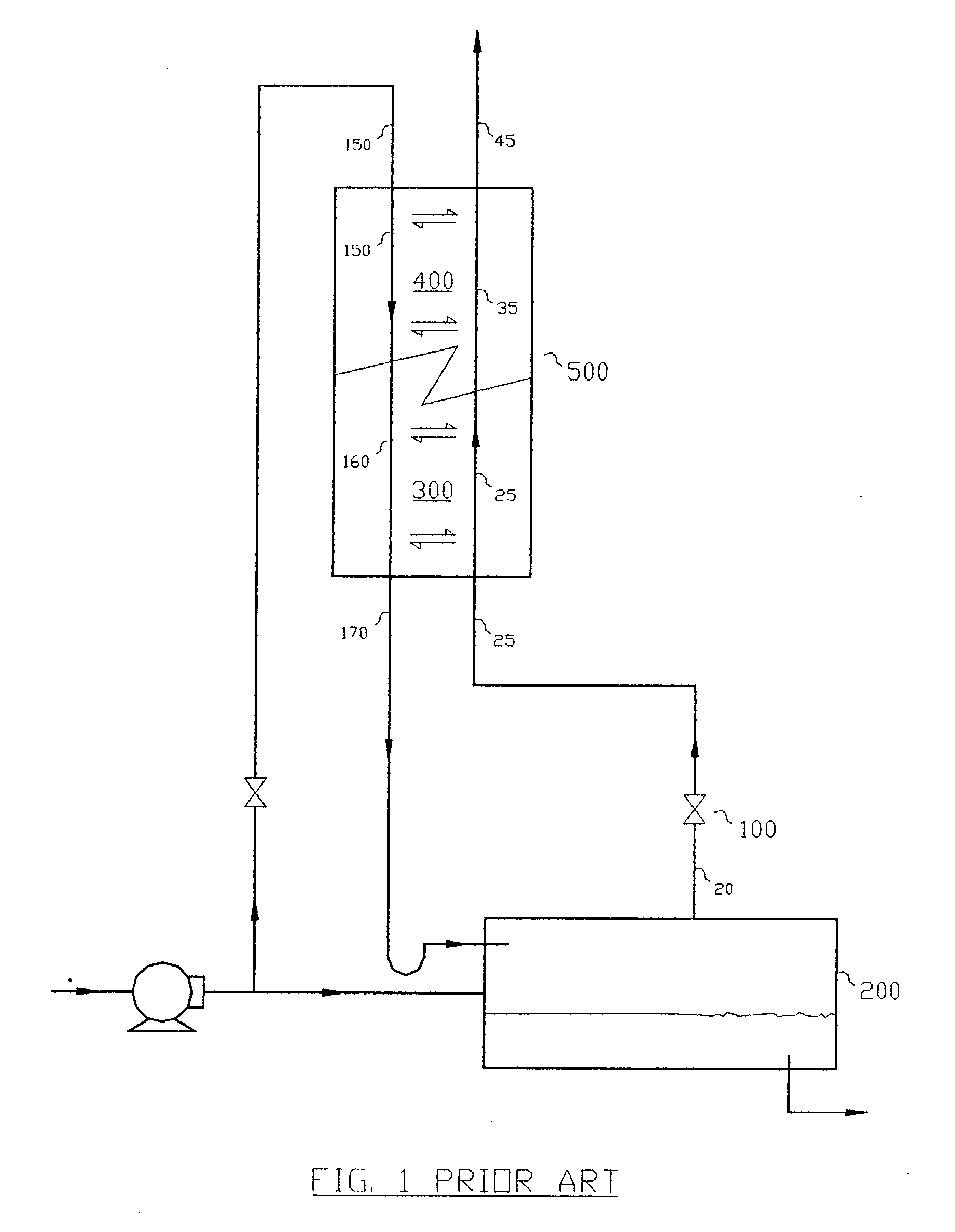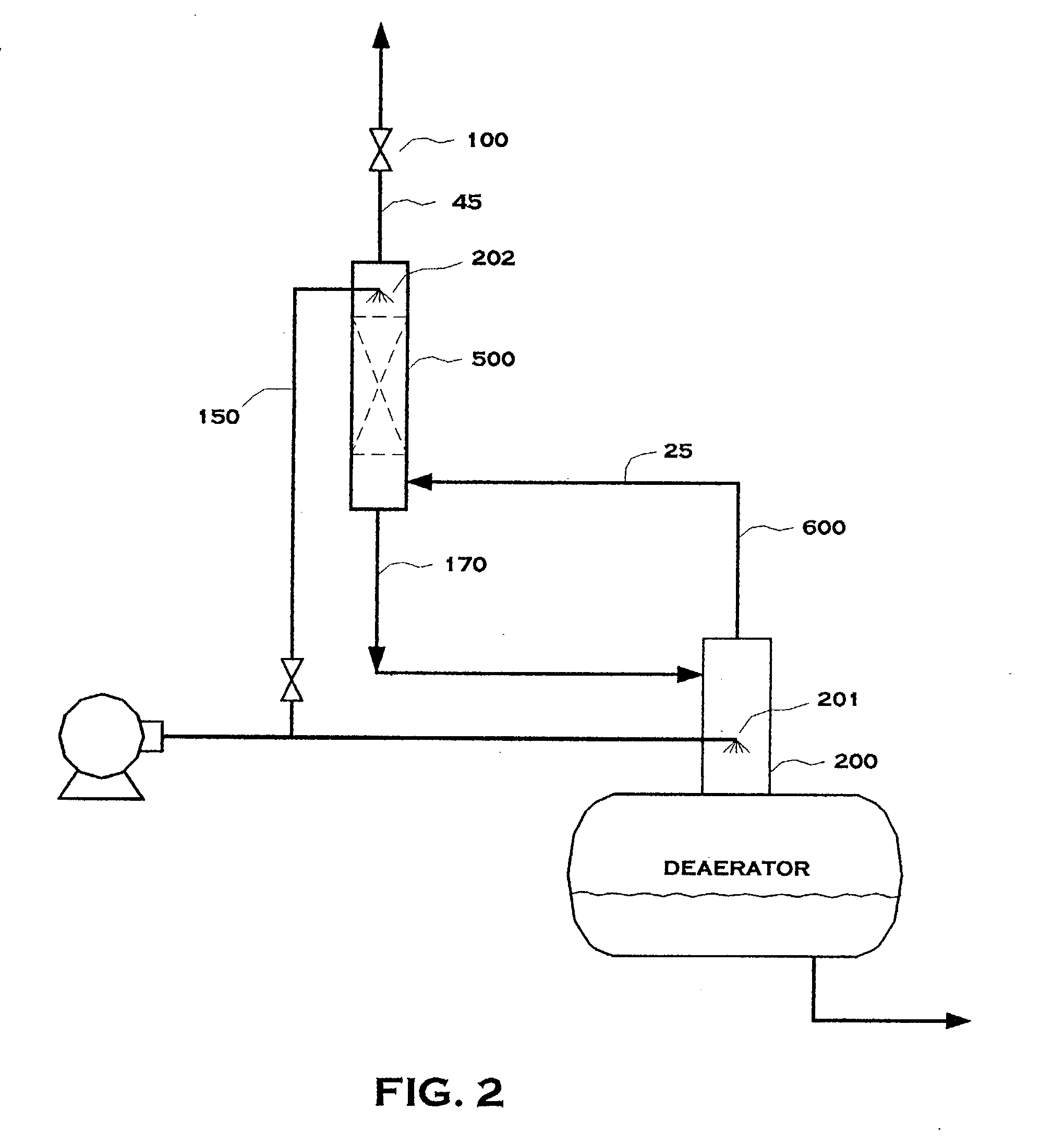Staged heat and mass transfer applications
a heat and mass transfer and stage technology, applied in distillation separation, fractional distillation, boiler/still distillation, etc., can solve the problems of few vents, if any, worth recovering, and few successful recovery evidence, so as to improve overall operability and reliability, enhance control robustness, and reduce operating and maintenance costs
- Summary
- Abstract
- Description
- Claims
- Application Information
AI Technical Summary
Benefits of technology
Problems solved by technology
Method used
Image
Examples
Embodiment Construction
[0038] This invention relates to applying the concept of staged heat and mass transfer (SHMT) to broaden its application. Two groups of applications illustrating the improvements based on the SHMT concept are given. One illustrates commercial applications of recovering vent from steam boiler deaerator systems with enhanced operability, reliability, control robustness and versatility. The other illustrates process adaptations of the SHMT concept to recover steam, steam condensate, and fugitive emissions involving particulate materials if desirable, from any process vent streams.
[0039] Deaerator Steam Vent Application
[0040] FIG. 1 shows a deaerator steam vent recovery system with a SHMT unit 500, (U.S. patent application Ser. No. 09 / 536,283) comprised of a heat transfer zone 400 and the mass transfer zone 300, with a movable boundary in between.
[0041] The mass transfer zone 300 allows countercurrent contact of vapor stream 25, which is a steam vent from the deaerator, to strip out dis...
PUM
| Property | Measurement | Unit |
|---|---|---|
| pressure | aaaaa | aaaaa |
| elevation | aaaaa | aaaaa |
| temperature | aaaaa | aaaaa |
Abstract
Description
Claims
Application Information
 Login to View More
Login to View More - R&D
- Intellectual Property
- Life Sciences
- Materials
- Tech Scout
- Unparalleled Data Quality
- Higher Quality Content
- 60% Fewer Hallucinations
Browse by: Latest US Patents, China's latest patents, Technical Efficacy Thesaurus, Application Domain, Technology Topic, Popular Technical Reports.
© 2025 PatSnap. All rights reserved.Legal|Privacy policy|Modern Slavery Act Transparency Statement|Sitemap|About US| Contact US: help@patsnap.com



